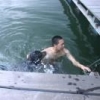-
Topics
-
Latest Update
-
0
남원무한샷콜걸♪상담라인-dabag66¥남원다방티켓배달¶남원원룸커피배달 ¥남원다방티켓배달☎
남원무한샷콜걸♪상담라인-dabag66¥남원다방티켓배달¶남원원룸커피배달 ¥남원다방티켓배달☎ 남원무한샷콜걸♪상담라인-dabag66¥남원다방티켓배달¶남원원룸커피배달 ¥남원다방티켓배달☎ 남원무한샷콜걸♪상담라인-dabag66¥남원다방티켓배달¶남원원룸커피배달 ¥남원다방티켓배달☎ -
0
세종커피배달 24시*텔레-msj36∧세종여관바리★세종커피배달전문점★세종다방티켓배달★
세종커피배달 24시*텔레-msj36∧세종여관바리★세종커피배달전문점★세종다방티켓배달★ 세종커피배달 24시*텔레-msj36∧세종여관바리★세종커피배달전문점★세종다방티켓배달★ 세종커피배달 24시*텔레-msj36∧세종여관바리★세종커피배달전문점★세종다방티켓배달★ -
0
김포특이한 다방☎텔레-msj36☎김포성인다방티켓¶김포오봉티켓☎김포다방티켓배달커피¥
김포특이한 다방☎텔레-msj36☎김포성인다방티켓¶김포오봉티켓☎김포다방티켓배달커피¥ 김포특이한 다방☎텔레-msj36☎김포성인다방티켓¶김포오봉티켓☎김포다방티켓배달커피¥ -
1
Neptune bounce mushroom for sale
1x Medium and 1x large on small rock - Reserved Still have some available! -
0
Wts: Brand new Redsea Reefmat 1200
Have the above to sell for $400 with delivery. Brand new and never use or touch water at all. Whatsapp 9071 8848 to deal. thanks.
-





Recommended Posts
Join the conversation
You can post now and register later. If you have an account, sign in now to post with your account.